- News
- Reviews
- Bikes
- Accessories
- Accessories - misc
- Computer mounts
- Bags
- Bar ends
- Bike bags & cases
- Bottle cages
- Bottles
- Cameras
- Car racks
- Child seats
- Computers
- Glasses
- GPS units
- Helmets
- Lights - front
- Lights - rear
- Lights - sets
- Locks
- Mirrors
- Mudguards
- Racks
- Pumps & CO2 inflators
- Puncture kits
- Reflectives
- Smart watches
- Stands and racks
- Trailers
- Clothing
- Components
- Bar tape & grips
- Bottom brackets
- Brake & gear cables
- Brake & STI levers
- Brake pads & spares
- Brakes
- Cassettes & freewheels
- Chains
- Chainsets & chainrings
- Derailleurs - front
- Derailleurs - rear
- Forks
- Gear levers & shifters
- Groupsets
- Handlebars & extensions
- Headsets
- Hubs
- Inner tubes
- Pedals
- Quick releases & skewers
- Saddles
- Seatposts
- Stems
- Wheels
- Tyres
- Health, fitness and nutrition
- Tools and workshop
- Miscellaneous
- Cross country mountain bikes
- Tubeless valves
- Buyers Guides
- Features
- Forum
- Recommends
- Podcast
TECH NEWS
All new Roubaix SL8 is the "smoothest" and fastest endurance road bike ever, claims Specialized
Specialized has unveiled the all-new Roubaix SL8 endurance road bike. The brand's mile muncher now comes with vastly updated Future Shock 3.0 damping tech, mudguard mounts and 40mm tyre clearance, making it gravel-capable. Prices start at £2,500 for the standard Roubaix SL8, going up to a whopping £12,000 for the top-of-the-range Specialized S-Works Roubaix SL8.
With these updates and big claims come big expectations of a bike that's said to have an unparalleled combination of smoothness, speed, and control. We were fortunate enough to ride the bike and get some initial impressions before the launch,, so read on to find out all the tech details and our first ride impressions...
Specialized Roubaix SL8: what's new?
The new Roubaix SL8 marks a significant update to Specialized's flagship endurance bike. It now comes with tyre clearance for 40mm tyres (previously the Roubaix was limited to 33mm tyres), there is mudguard compatibility and at the front end, any bumps on the ride are smoothed by an updated Future Shock system.
The Roubaix SL8 might look much like its predecessor, but the list of updates have added to the versatility of the bike beyond paved roads - the top tube and downtube now host extra mounts for a bottle and top tube bag. However, it's the Future Shock technology that continues to be at the heart of the Roubaix SL8's smoothness and control.
New Future Shock 3.0
The Roubaix SL8 introduces the third generation of the Future Shock system, which first debuted in 2016. Externally, you won't really be able to spot much of a difference apart from the differently-shaped, thicker rubber boot. The Future Shock 3.0 continues to be located between the stem and head tube, and offers 20mm of travel upward to absorb impact, which should result in a smoother ride with more control.
According to Specialized, Future Shock 3.0 has been refined to reduce impacts by 53 percent compared to its nearest competition. In testing, Specialized rode the Roubaix and rival endurance bikes across a series of 22mm bumps at 32kph
multiple times to simulate typical rough pavement.
How has Specialized achieved this, then? Well, those gains could be attributed to the revamped Future Shock 3.0's structure, but simultaneously Specialized has focused on improving the system's durability, serviceability and tunability.
Starting with the durability; Specialized says the Future Shock should last the lifetime of the bike. To aid that, there is a new, thicker rubber boot and additional seals have been updated to ensure that water and contaminants are kept out of the system even in the most demanding conditions.
Inside the system, Specialized has redesigned the shock so that the booster spring sits at the top for easy access should you want to change to a softer or harder spring. The three different spring options (firm, medium, and soft) are different in terms of their spring load from those used on the Future Shock 2.0. The new build structure is also easier for servicing, which should now be doable at shop level for the whole Future Shock system.
And when it comes to tunability, in addition to the three springs that offer different ride feel, riders can now customise the system's response to bumps with preload washers. You can fit up to five preload washers on top of the chosen spring, which means the system can be adjusted more precisely to suit the weight and ride preference or style of each rider.
Future Shock 3.0 comes in three configurations: 3.3, 3.2 and 3.1.
The Future Shock 3.3 comes with the S-Works and Pro models and offers hydraulically damped plushness that is adjustable on the go with the top dial.
The Expert and Comp models get a Future Shock 3.2 which is also hydraulically dampened but loses the on-the-go adjustability, which is automatically set to the smoothest setting.
The Future Shock 3.1 is undamped, but riders can still adjust the preload to their desires with the springs and washers. This one comes with the Sport 105, Sport Apex and Base models.
Specialized Roubaix SL8 - AfterShock
Moving on to the rest of the bike, the Roubaix SL8 continues to feature the AfterShock technology, effectively offering the rider 18mm of compliance at a 45-degree angle on the saddle.
The system is built around the D-shaped Pavé seatpost with a Dropped Clamp design - which means that the seat clamp sits 65mm deep inside the seat tube instead of the more traditional clamp that'd sit at the top. This leaves more seatpost free to flex, which should result in a smoother and more compliant ride. The design also means that the Roubaix needs a longer-than-normal seatpost to allow for the 65mm lower clamp to work effectively.
Specialized Roubaix SL8 - frame and tech changes
Visually, it's harder to spot many changes to the Roubaix SL8's appearance. One of the major changes to the frame is of course the wider tyre clearance, enabling the endurance machine to now take 38mm or 40mm tyres - up from the previous iterations' 33mm. You can also equip it with mudguards, and still fit in 35mm wide rubber. Specialized recommends tyres from 28mm upwards to keep the bike's ride characteristics as they should be.
Both of these changes make the bike more capable in rougher conditions, whether it's on off-road bikepacking excursions or riding in the UK winter weather.
In addition to the mudguard mounts, Specialized has also added two new mounting points: one on the top tube and the other on the downtube. The top tube one can take a bolt-on top tube bag without interfering with the Future Shock, and the bottom mounts can take a third bottle or a tool caddy for longer rides.
The frame has got a few updates to be more aero, namely in the form of a newly shaped downtube, fork and ever-more dropped seat stays. The brand says these developments mean that the bike is now 17.7 seconds faster on a 100km ride when the rider averages 3W/kg.
The frame is now 50 grams lighter than previously - due to the more advanced layup used - with a painted 56cm frame with no hardware weighing 828g. A complete S-Works Roubaix comes in a claimed 7.3kg, the complete Pro model comes in at 8.1kg, the Expert model at 8.6kg, the Comp and Sport models at 8.9kg, and the base model at 9.46kg
Specialized Roubaix SL8 - Geometry
The geometry of the new Roubaix SL8 remains largely unchanged from its predecessor, with the only change being the front centre that has been lengthened by about 10mm across sizes to accommodate for the bigger tyres. There are no women-specific models, because loyal to its modern bikes, Specialized calls its bike geometry "beyond gender", saying it caters to everyone regardless of gender.
Size 54 frame has a stack of 585mm, a reach of 381mm and a head angle of 71.5 degrees. The bottom bracket is dropped 78mm, and the wheelbase is 1,005mm, while the top tube length is 550mm.
As you’d expect, the Roubaix offers a far less aggressive position than the Tarmac SL8, for example. The little more relaxed, endurance geometry should relieve pressure on your hands, arms, and shoulders for capability and confidence on
any road, according to Specialized.
Specialized Roubaix SL8 models and pricing
The new Specialized Roubaix comes in five Specialized builds and one S-Works model, which is also available as a frameset only. All frames are available in sizes from 44 to 61 (and 64 for some models) and come with 32mm tyres.
Specialized S-Works Roubaix SL8 - £12,000/ £4,750 (frameset only)
Fact 12R carbon frame
SRAM Red eTAP AXS groupset with power meter
Roval Terra CLX II wheels
Future Shock 3.3
Specialized Roubaix SL8 Pro - £8,000
Fact 10R carbon frame
SRAM Force eTAP AXS groupset with power meter
Roval Terra CL wheels
Future Shock 3.3
Specialized Roubaix SL8 Expert - £6,000
Fact 10R carbon frame
SRAM Rival eTAP AXS groupset with power meter
Roval Terra C wheels
Future Shock 3.2
Specialized Roubaix SL8 Comp - £5,000
Fact 10R carbon frame
Shimano 105 12-speed Di2
DT Swiss G540 wheels
Future Shock 3.2
Specialized Roubaix SL8 Sport Apex/105 - £3,250 (Apex)/ £3,000 (105)
Fact 10R carbon frame
Shimano 105 12-speed Mechanical / SRAM Apex AXS
DT Swiss G540 wheels
Future Shock 3.1
Specialized Roubaix SL8 - £2,500
Fact 10R carbon frame
Shimano Tiagra 10-speed
Axis Elite Disc wheels
Future Shock 3.1
Specialized Roubaix SL8 first ride impressions
I was lucky enough to take the Roubaix SL8 on the roads for the first time in Portugal. What I anticipated to be a sunny escapade on buttery smooth tarmac roads, climbing the beautiful hills turned out to be a rather dreich experience. Those pristine roads don't lend themselves well to rain, which made them ice-rink-like, and dotted with oil stains they were all but confidence-inspiring, putting the Roubaix's claims to offer more confidence to the true test.
And despite those dreary weather conditions, my experience riding the Roubaix was very pleasant. I am one of the many who ride the Specialized Tarmac when in reality, with my riding preference of covering long distances and not partaking in any racing beyond local QOM hunting, I'd always been better suited to ride the more relaxed Roubaix.
It's always been the Future Shock for me, though, that made me steer away from this endurance road bike. It might be the four-day-long celebrity treatment that I got at the press camp or a genuinely improved technology, but the Future Shock 3.0 left me convinced it's actually serviceable and, more importantly, make this bike a joy to ride. In our presentation, the change of the spring took about seven minutes, which means that changing it really isn't that difficult of a job.
From the first pedal strokes, it was evident that the Roubaix SL8, although geared towards the endurance market, is no slow bike. I was definitely sitting more upright than I am perhaps used to - especially as the Roubaix comes with the raised 'Hover' bars (they can be swapped to any other bars with a shim), but I quickly found myself enjoying this not overly stretched and extended position.
Despite all the built-in compliance and dampening the Roubaix packs in, it feels sharp to accelerate and lacks no stiffness when you want to power it up a steeper climb or blast it a little on a flat. Contrary to what I might have first thought, the bump dampening from the Future Shock and AfterShock made the bike feel faster consistently even if the surface wasn't that harsh. And when it did get harsh, or gravelly, I didn't have to dodge every bump and rough patch on the roads - instead, I could simply focus on pedalling smoothly. And for once, I was actually excited to ride over speed bumps, and didn't feel like I was underbiking when we hit some gravel roads.
Specialized said that despite the adjustability the Future Shock 3.3 offers - allowing it to be locked - most folk leave it open at all times. I was, for obvious reasons, testing it out in all different modes, closing and opening it at different scenarios, but found that although the tunability was useful, I didn't really need to close it up.
Of course, the most diable FutureShock 3.3 I got to test is reserved for the top models - though you can upgrade the lower iterations if you want. But in any of its third-generation configurations, the technology does offer a confidence boost that not many other endurance road bikes have. The only place where I found the 3.3's on-the-go tuning was great was steeper climbs where I wanted to stand up, and I could lock up the system in the same way as on a mountain bike.
The Future Shock obviously adds weight to the bike, but I was still very happy with the 8.5kg my size 49 bike tipped the scales at.
Beyond gravel and speedbumps, the biggest advantage of the Future Shock was noticeable on descents. Once the slippery roads finally dried out and I had got my position on the bike tuned in, suddenly the Portuguese flowy descending became addictive. The Future Shock made leaning into the bike very confidence-inspiring indeed and made the front end of the bike track the tarmac firmly even at higher speeds.
On the flat, it would obviously be great to test the aero-ness of the Roubaix, but let's be honest this is not an aero bike and I don't ride enough with power meters to tell whether I saved a couple of watts or not. On endurance bikes, I think it really is negotiable how much your minimal aero gains matter, anyway, and with Specialized leaving the cables exposed at the front of the bike, and choosing the Hover bar for the stock builds (although you can choose to upgrade to Rapide or any bar you might want later) I think they've thought the same. You will have to compromise somewhere, and the Roubaix has chosen comfort and versatility over out-and-out speed.
The build kits of the Roubaix range from beginner-friendly to the bling S-Works, and I think the Expert build (£6,000) I rode offers a balance of performance and comfort. Is it cheap? No. The pricing of the Roubaix largely mimics that of the Tarmac SL8, meaning that the top models are eye-wateringly pricey, but you still have a budget option with some compromises in components, too. Compared to other new endurance bikes, such as the recently updated Canyon Endurace, the pricing isn't too different, though, considering the versatile bike you get.
If you do love long-distance riding and mixing up surfaces, I think that with the added tyre clearance, a few more mounts and updated Future Shock, Specialized has managed to make the Roubaix SL8 a very appealing option. It's not the lightest, the more aero, or the cheapest endurance road bike out there, but it does give you a very plushy, premium ride on and off-road, something that not many bikes can match - at least on paper. It is a road bike you can comfortably take off-road, and we're bound to see it soon at the top-level gravel races.
All that said, I am very much looking forward to putting the Roubaix through some more long miles on rough UK roads, with a full review to follow soon.
Latest Comments
- pockstone 3 sec ago
While they're at it, they could put a little door on the side of the headtube. You could get a change of clothes in there.
- mdavidford 4 min 45 sec ago
I was about to say the same thing - I counted two drivers inconsiderately pulling forward and blocking the cycle track, and the works van parked...
- brooksby 10 min 3 sec ago
https://www.theguardian.com/us-news/2025/mar/10/chris-wright-climate-fos...
- OnYerBike 28 min 9 sec ago
My interpretation of the law would be that a motor vehicle/EAPC does not stop being a motor vehicle/EAPC just because it has run out of fuel...
- C3a 44 min 14 sec ago
Too many unsold bikes of the kind not many people want though?...
- Rendel Harris 13 hours 23 min ago
I generally get a response saying that action will be taken in 90% of cases I submit (I do only submit ones that I believe are absolute certanties)...
- OldSkoolOldFart 13 hours 41 min ago
If you can't hear me call out a cheery (loud) "excuse me" as I approach them you're not going to hear the pathetic "ting" from a tiny bell....
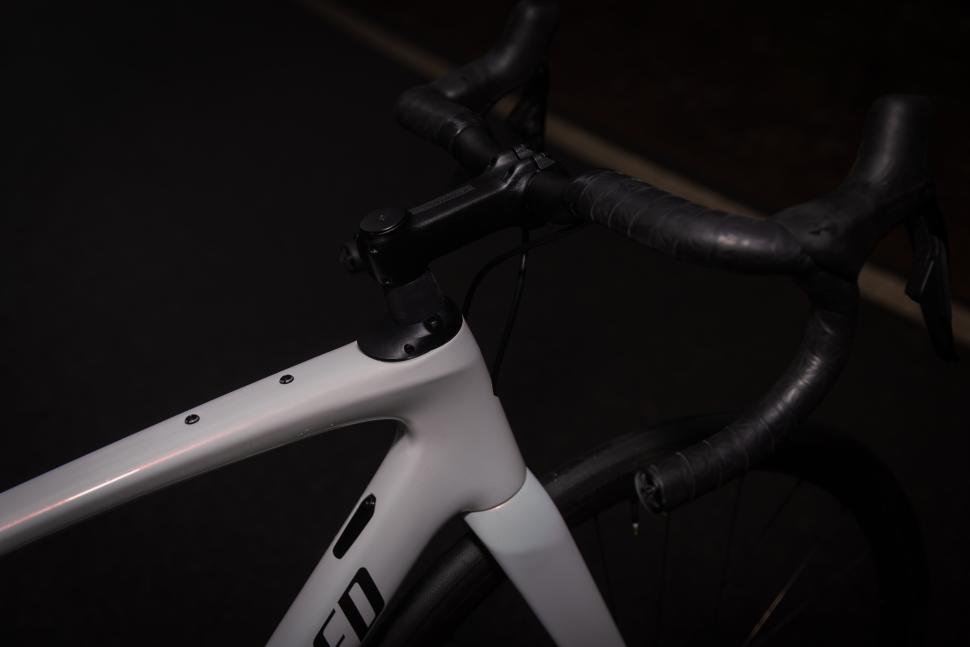
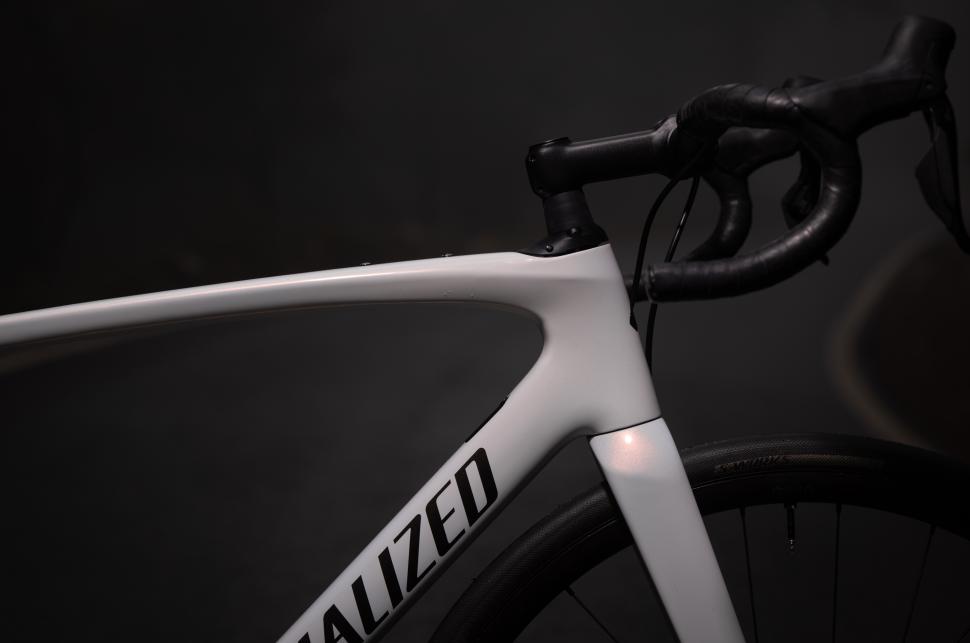
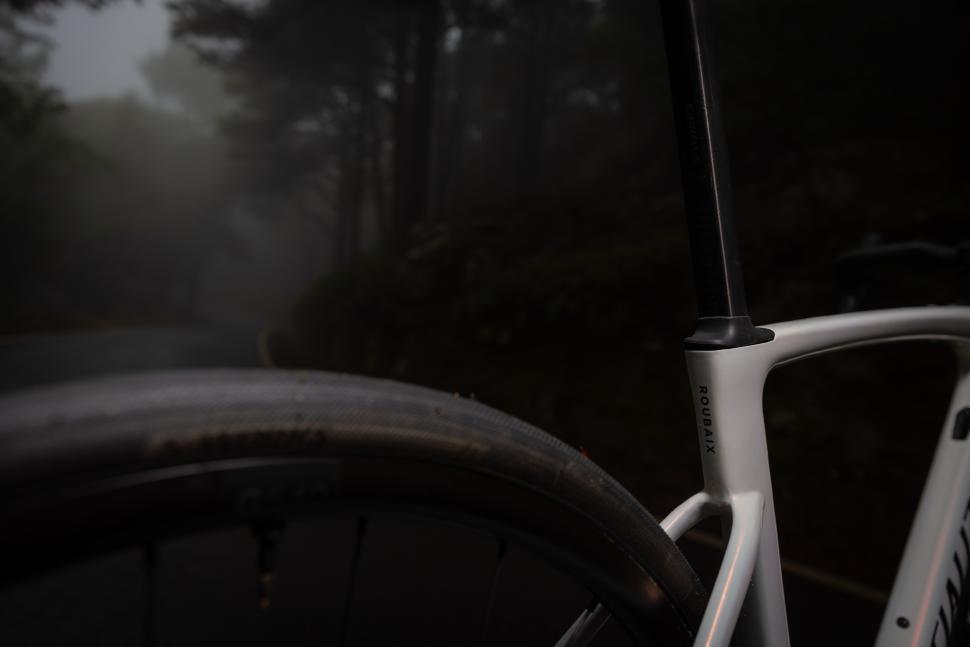
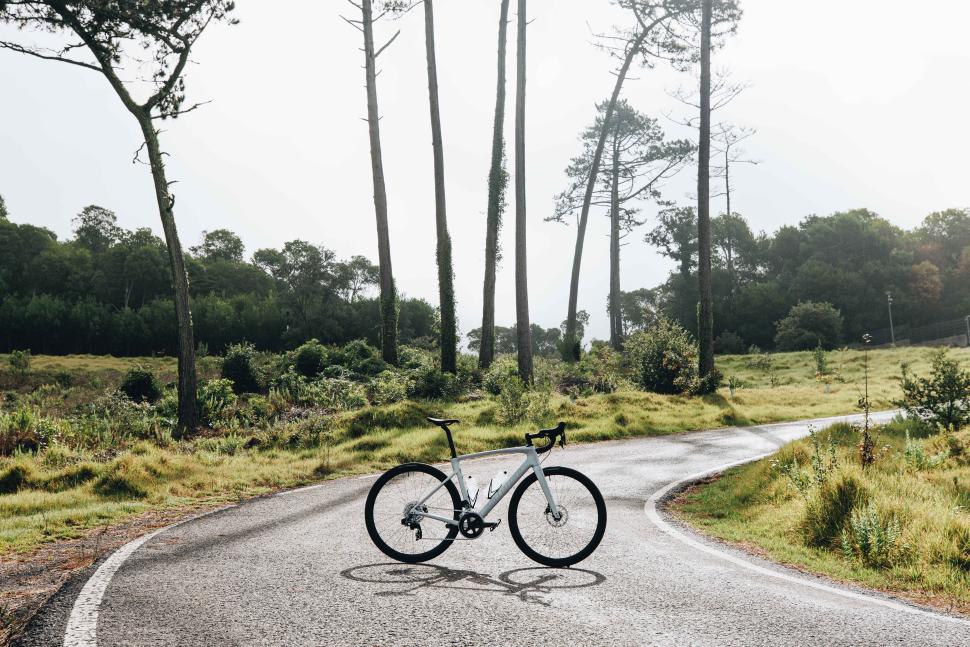
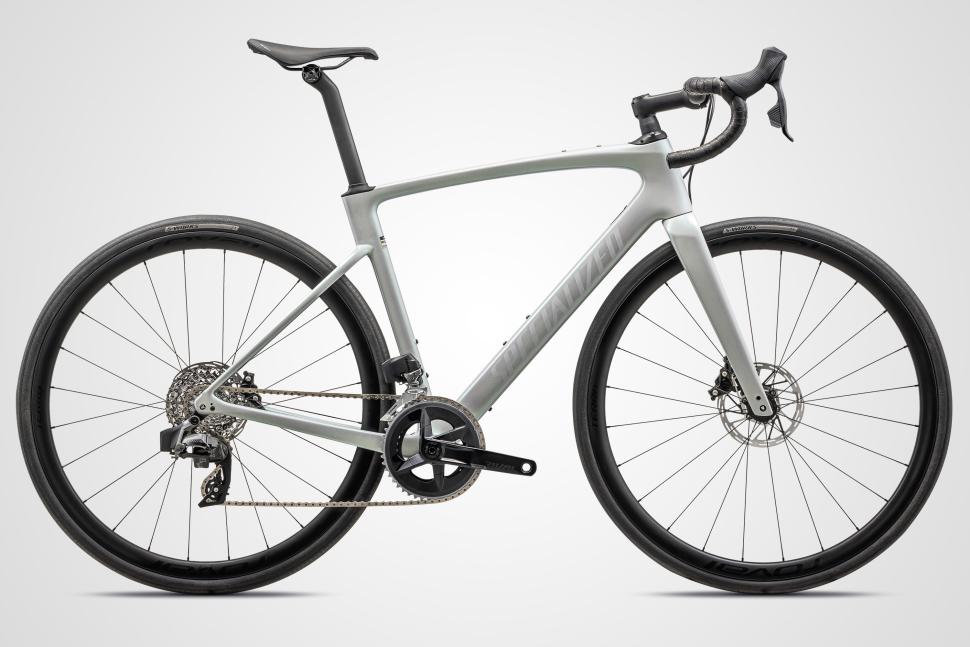

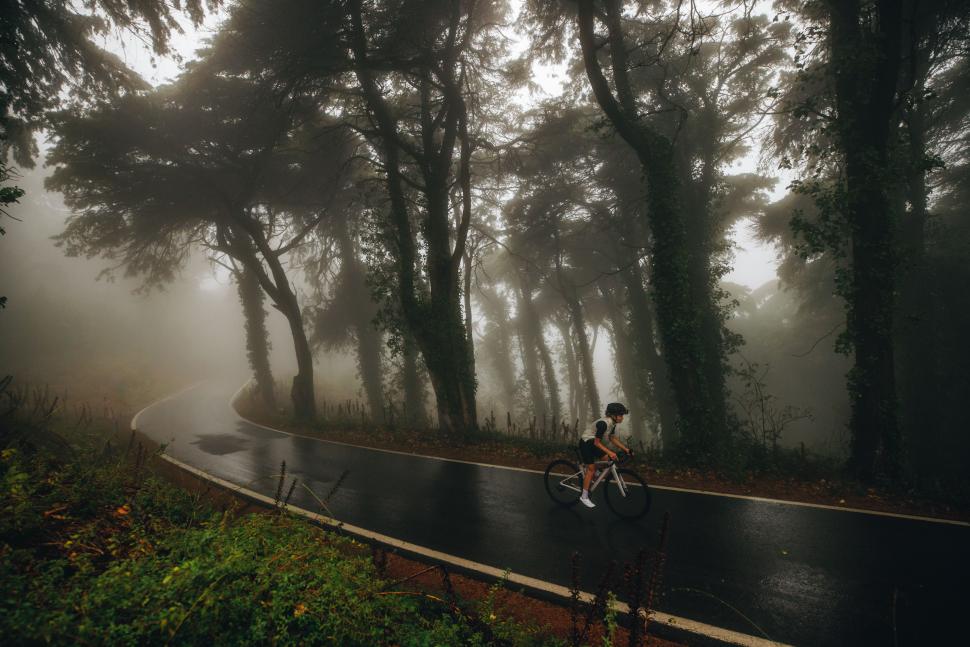
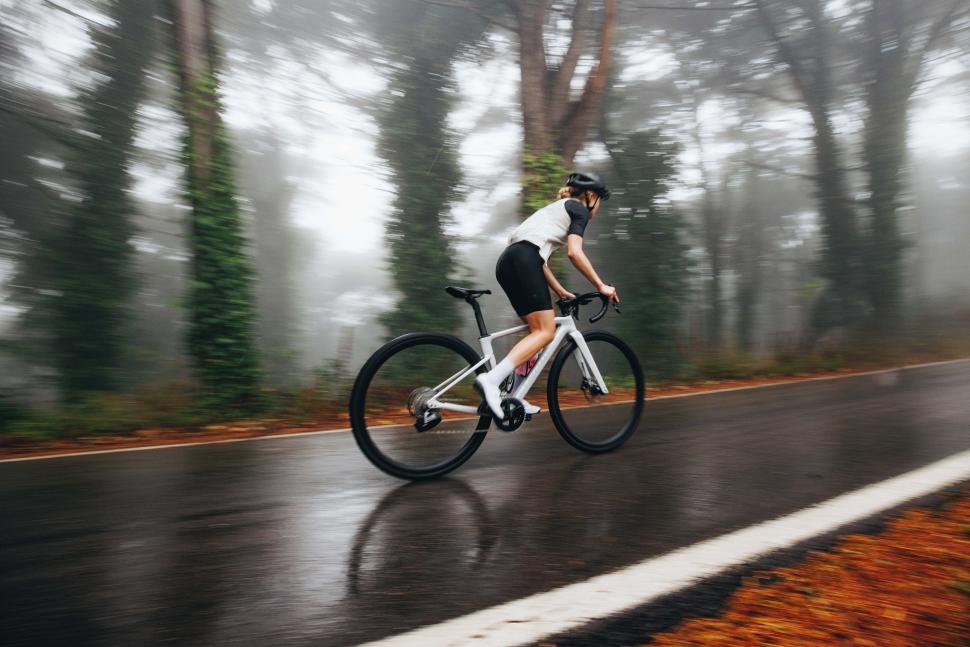
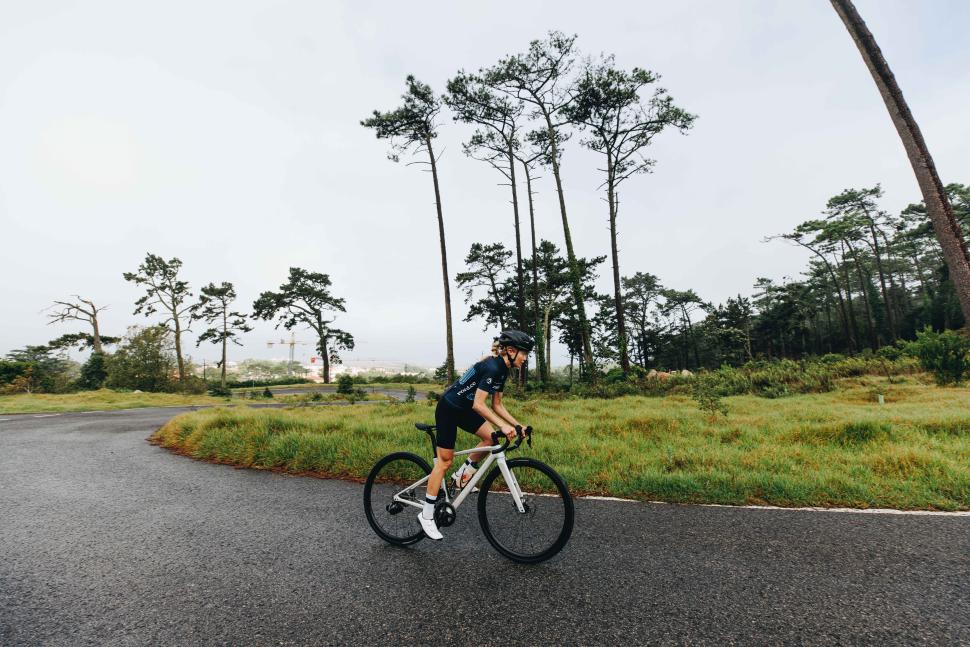

Add new comment
9 comments
Shame there's no Ultegra or Dura Ace builds.
if you're going to pay that much for a bike you should at least have a few build options.
I like everything about the Future Shock bikes except for the ugly and unpractical Hover Bar. If you're preferred riding position is that high then you should be able to use more spacers below the stem or a higher-rise stem and thereby avoid needing a bar with the extra rise; that way you can have space for accessory mounting and not a monstrosity of a bar. That bar should be an after-market option for people who need extreme fit positions - not a super-ugly default option sold mostly to people who don't need it.
£5,000 for a 105 equipped bike!! I must be getting old!
That is the Di2 version of 105, the mechanical 105 is £3000. It's still a sign of the times though, I paid £2500 for a new Ultegra equipped Roubaix SL4 in 2015...
So based on the price of your Ultegra version bought 8 years ago, the 105 version is actually pretty decent value Mark unless you've never encountered inflation. I do, however, take issue with the comment that the Expert build at £6,000 is similar to the cost of the new Canyon Endurace - £3,849. It does has future shock where the Canyon doesn't but when I was buying a new bike recently (BMC Roadmachine) that was a reason not to opt for the Roubaix (and the reviewer's write-up suggests it has become an even more complex part of the bike).
Well, no and yes. The 105 version at the time was £1800, equivalent to an adjusted £2350 today. However, the 105 (7100) of today is most likely superior to the Ultegra (6800) of back then, and the carbon fibre is Fact 10r on the new bike rather than Fact 8r, so probably all evens out.
Yeah, I thought it was a bit off the mark to say pricing isnt too different to the Canyon. SRAM red: £9k Canyon versus £12k Roubaix. Force: £5250 vs £8k. 105 Di2: £3.5k vs £5k.
The £6,000 is better value than the £3,000? That's a hard sell
The upper end of the range is for dafties with loadsa money and no appreciation of the law of diminishing returns; or for bikefrock fashionistas.
One is allowed to buy the top end frameset for £4500. Alternatively, one might buy the £2500 whole bike with the cheaper carbon fibre and spend another $400 on the 3.3 top-clarss front boinger to replace the more mundane 3.1 boinger, if that's the attraction.
Another £400-500 might significantly improve the wheels and tyres from those supplied on the £2500 model .... but the bars, stem, seatpost, seat and tiagra drivtrain are not a lot different from the stuff on the whizzy rip-off models, really.
But they all cost far too much, eh? Bikes for the gizmo-obsessed, even though the gizmos at least provide a useful function in this case (unlike many gizmos one could mention).